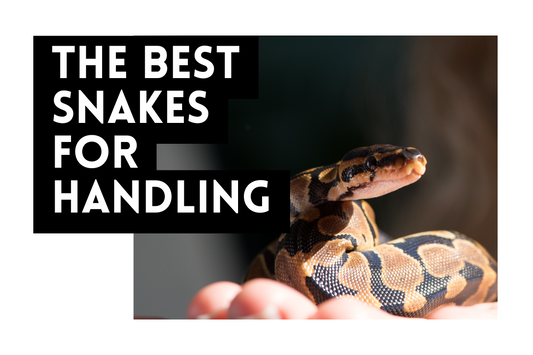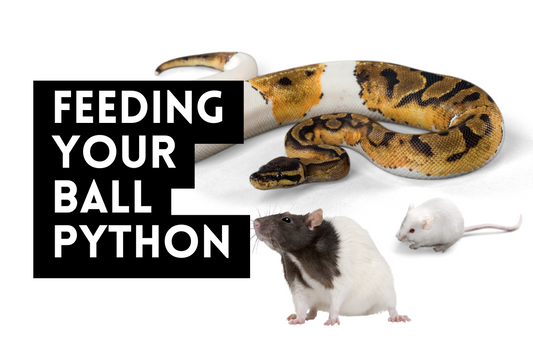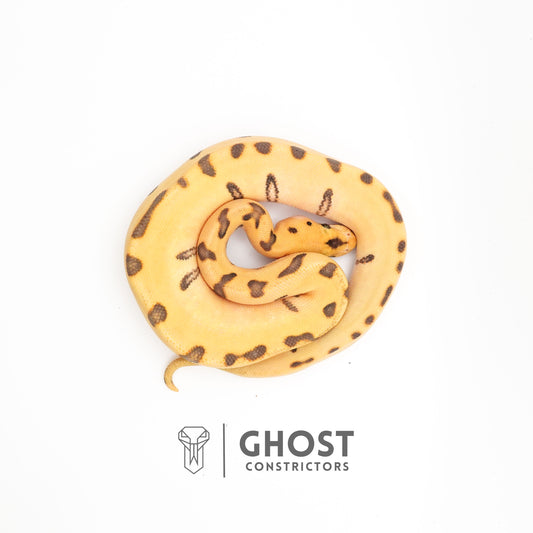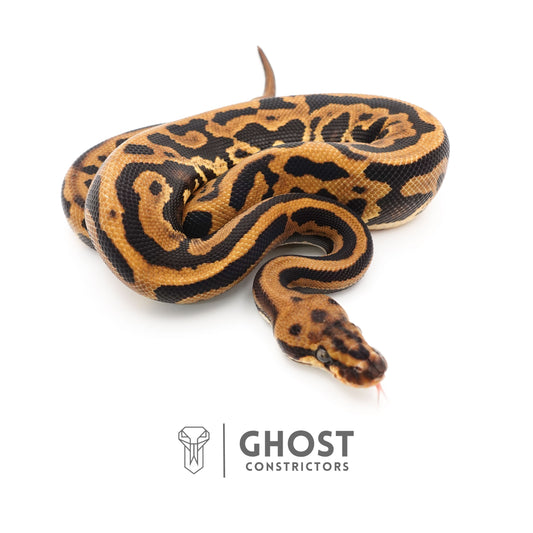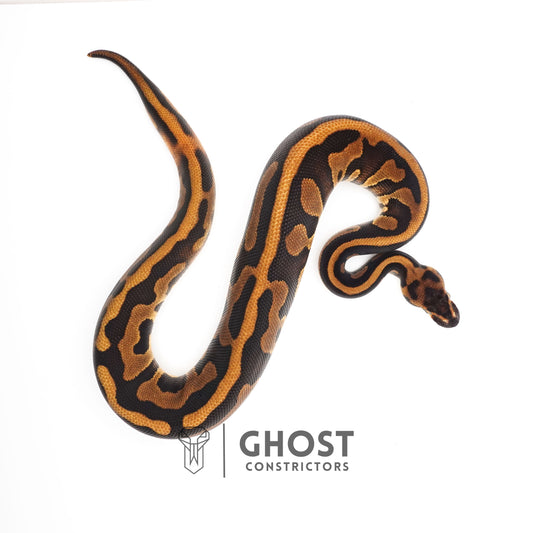Expert Insights for Ultimate Ball Python Care
Share
Welcome to the World of Ball Pythons 🐍
Thinking about getting a ball python or already have one? You're in the right place. Whether you're new to reptiles or a seasoned keeper, this guide dives deep into ball python care, offering expert-backed advice to help your snake thrive.
At Ghost Constrictors, we're more than just breeders—we're passionate reptile keepers here to support you every step of the way. Let’s get into everything you need to know to provide ultimate care for your ball python.
Table of Contents
- What Makes Ball Pythons Great Pets?
- Ball Python Behavior: What to Expect
- Ball Python Habitat Setup: The Essentials
- Temperature, Humidity, and Lighting
- Feeding Your Ball Python Like a Pro
- Handling and Taming Techniques
- Common Health Issues to Watch For
- Shedding: What’s Normal and What’s Not
- How to Care for a Ball Python (Step-by-Step)
- Where to Buy Healthy Ball Pythons for Sale
- Final Thoughts: Set Your Snake Up for Success
- Let Us Help You Start Right
1. What Makes Ball Pythons Great Pets?
Ball pythons are among the most popular pet snakes—and for good reason. They’re docile, low-maintenance, and don’t get too large. Most adult ball pythons max out between 3–5 feet in length.
They’re perfect for beginners, yet interesting enough to keep experienced hobbyists hooked. With proper care, they can live 20–30 years, making them long-term companions.
2. Ball Python Behavior: What to Expect
Ball pythons are known for their shy and calm demeanor. In fact, their name comes from their tendency to curl into a ball when frightened. Don’t expect constant activity—they’re ambush predators that prefer to stay hidden and strike when it’s time to eat.
Understanding their natural behaviors helps build a better care routine. For example:
- Nocturnal habits: They’re more active at night.
- Hiding is healthy: A hiding ball python is a happy one.
- Slow acclimation: Give new snakes time to adjust before handling.
3. Ball Python Habitat Setup: The Essentials
Setting up your ball python’s habitat is one of the most important parts of proper care. A well-designed enclosure mimics their natural environment and helps them feel safe.
Enclosure Size
- Baby Ball Python: 10–20 gallon tank
- Adult Ball Python: 40-gallon or larger (or 4'x2'x2' PVC enclosure preferred)
PVC enclosures are lightweight, easy to clean, and retain heat and humidity well. They're the top choice among serious keepers.
Substrate
Choose a substrate that holds humidity and is safe to burrow in:
- Recommended: Coconut husk, cypress mulch, bioactive soil
- Avoid: Pine, cedar, sand
4. Temperature, Humidity, and Lighting
Ball pythons thrive when their environmental conditions are just right.
Temperature Gradient
- Hot spot: 88–92°F
- Cool side: 76–80°F
- Nighttime drop: OK to allow a slight dip to low 70s on the cool end
Use a thermostat-controlled heat mat or radiant heat panel. Avoid heat rocks—they can cause burns.
Humidity
- Ideal Range: 55–65%
- Shedding Time: Increase to 70%+
- Mist lightly or use a humid hide with damp sphagnum moss.
Lighting
They don’t require UVB, but providing a day/night light cycle helps maintain a natural rhythm. A low-wattage LED on a timer works well.
5. Feeding Your Ball Python Like a Pro
Feeding can be one of the trickiest parts for new owners. Here's how to do it right.
What to Feed
- Frozen-thawed rodents are safest and most convenient.
- Choose appropriately sized prey: about the same width as the snake’s widest part.
How Often to Feed
- Hatchlings: Every 5–7 days
- Juveniles: Every 7–10 days
- Adults: Every 10–14 days
Pro Tip:
If your ball python refuses food, don’t panic! It's common, especially during cooler months or after a habitat change. Check husbandry first.
6. Handling and Taming Techniques
The key to building trust with your ball python is consistency and patience.
How to Handle
- Wait at least a week after bringing them home.
- Don’t handle after feeding—wait 48–72 hours.
- Use slow, confident movements.
Start with short sessions a few times a week and gradually increase. Avoid handling during shed or if the snake appears stressed.
7. Common Health Issues to Watch For
Healthy ball pythons are active (at night), eat regularly, and shed in one full piece. Here’s what to keep an eye out for:
- Mites: Tiny black dots, often around the eyes and vent
- Respiratory infection: Wheezing, bubbling at nostrils, open-mouth breathing
- Stuck shed: Patches of retained skin or eye caps
- Anorexia: Refusing food for extended periods
📞 Call your reptile vet if symptoms persist or worsen.
8. Shedding: What’s Normal and What’s Not
Your snake will shed every 4–8 weeks when growing and less often as an adult.
Signs of Shedding:
- Dull color
- Cloudy or blue eyes
- Hiding more than usual
Ensure high humidity and rough surfaces in the enclosure to help them shed properly. If shed gets stuck, offer a soak in lukewarm water.
9. How to Care for a Ball Python (Step-by-Step)
Here's your quick daily, weekly, and monthly checklist for how to care for a ball python:
Daily
- Check temperatures and humidity
- Spot clean waste
- Ensure fresh water is available
Weekly
- Clean water bowl thoroughly
- Inspect your snake for health issues
- Monitor appetite and feeding behavior
Monthly
- Deep clean the enclosure
- Replace substrate if needed
- Weigh your snake to track growth
10. Where to Buy Healthy Ball Pythons for Sale
Looking for ball pythons for sale from a trusted source?
We specialize in captive-bred ball pythons with stunning morphs and genetics you can trust. Every animal is shipped overnight with a live arrival guarantee, and we’re here to support you before and after your purchase.
Our snakes are family raised with care, socialized regularly, and fed weekly until they find their forever homes.
✅ Browse available ball pythons for sale
✅ Ask us for pairing advice or help choosing the right morph
✅ Join our email list for updates and care resources
11. Final Thoughts: Set Your Snake Up for Success
Owning a ball python can be incredibly rewarding when you’re armed with the right knowledge. From setting up the perfect habitat to feeding, handling, and long-term care—your success starts with understanding your snake's needs.
Remember, ball python care isn’t about perfection, it’s about consistency and compassion. Do your research, observe your snake’s behavior, and don’t be afraid to ask for help.
12. Let Us Help You Start Right 🐍
Looking to buy your first ball python or add to your collection?
We’ve got you covered with:
- High-quality ball pythons for sale
- Ongoing customer support
- Free care guides and resources
- Fast, safe, overnight shipping across the lower 48 states
👉 Browse Our Ball Pythons Now
👉 Get Help Choosing the Right Morph
Let’s give your new ball python the best life possible—together.


